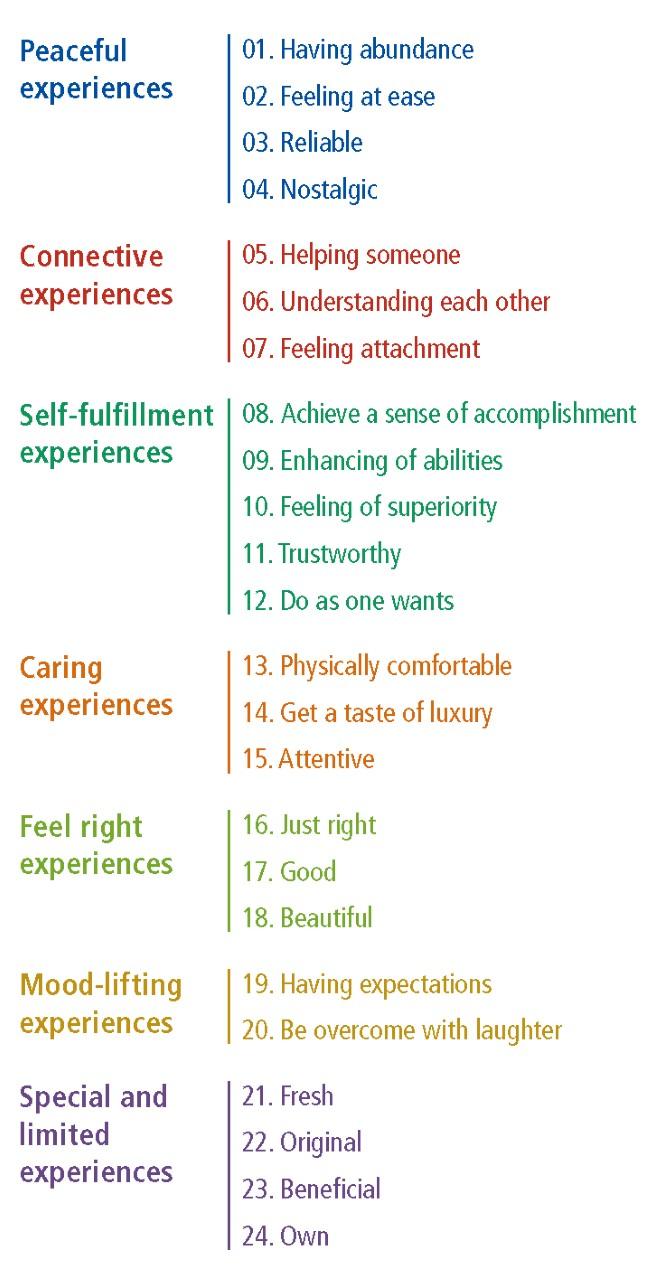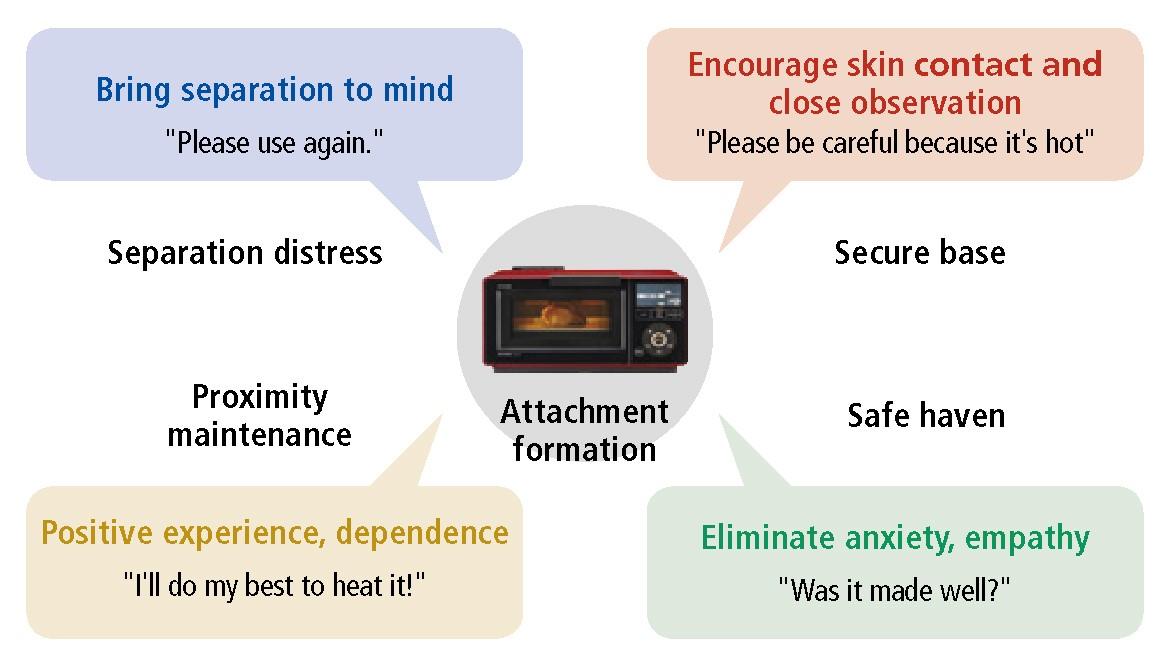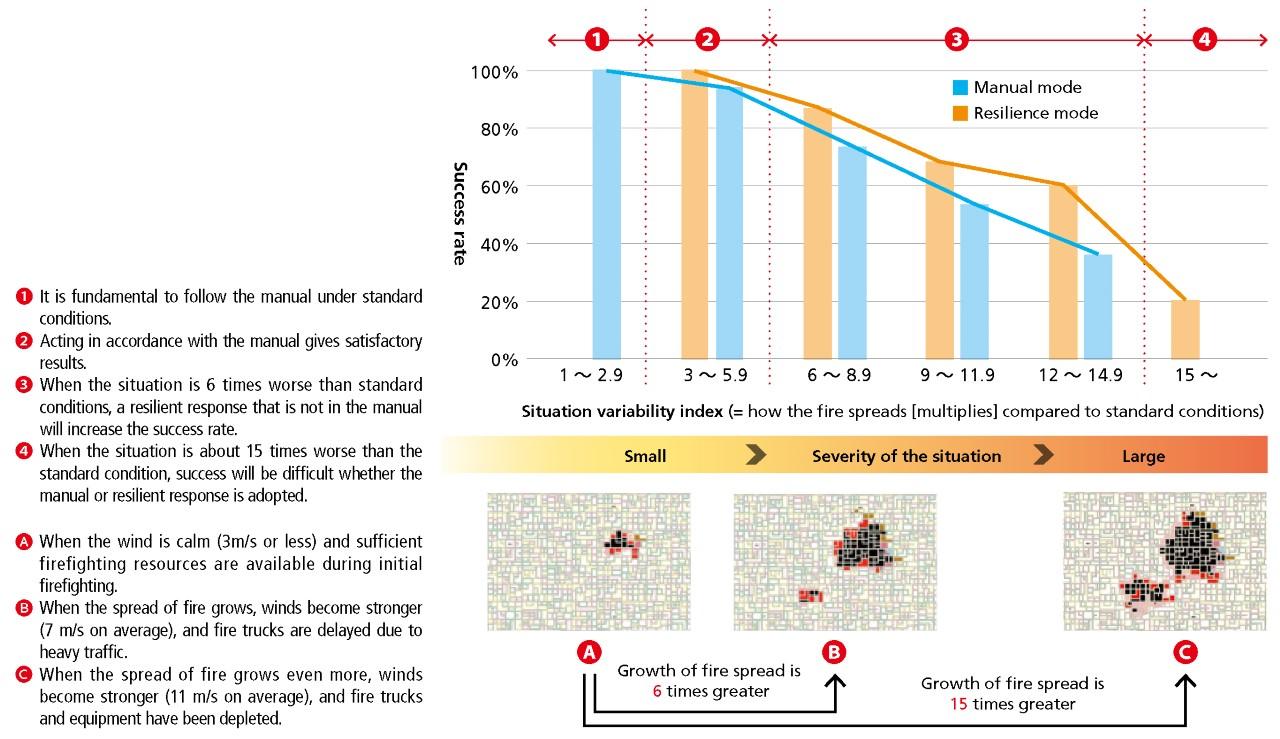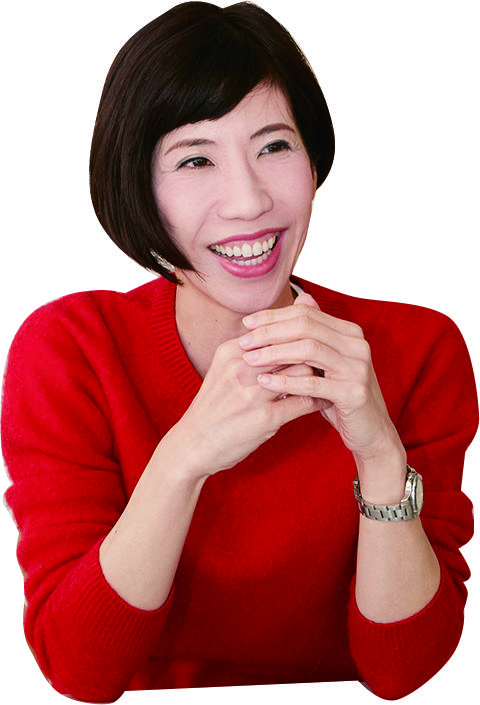- Home
- New Kyurizukai
- Human factors
from Keio's Faculty of Science and Technology
Human factors
from Keio's Faculty of Science and Technology
Having human attributes at the source of every design
Knowing the site, seeing the site
Considering various things about the people related to the research theme. Is the only essence of life being able to do work quickly and without making mistakes? What kind of difficulties do pilots and firefighters face while doing their jobs, and what do they find fulfilling? What Nakanishi, who wishes to help solve the specific problems people have through engineering, cares most about is listening to the voices of people at sites.
Miwa Nakanishi
Specializes in human factors. Investigates the possibility of solving or easing on-site problems and creating new added value from the perspective of human factors. Graduated from the Keio University Faculty of Science and Technology, Department of Administration Engineering in 2000. Completed the doctoral program at the Keio University Graduate School of Science and Technology in 2004. Ph.D. in engineering. Professor at the Tokyo University of Science Faculty of Engineering, Department of Management Science from 2005. Assistant Professor at the Chiba University School of Engineering,Division of Design Science from 2008.Assistant Professor at the Keio University Faculty of Science and Technology, Department of Administration Engineering from 2010. Current position since 2014.
The Research
In this issue, Professor Miwa Nakanishi, who proposes designs for tangible and intangible products from the perspective of human factors, is introduced.
Designing products and safety based on knowledge of human characteristics
Pursuing ideal conditions for humans through engineering
The human palm is generally about 17 to 19 cm in size, and this has been made the standard for deciding smartphone sizes. In addition to physical size, there are many other characteristics that are common to humans in the physiological, cognitive, and psychological aspects. Nakanishi researches how to apply these human characteristics when creating products and services, managing safety, etc., from an engineering perspective and makes outstanding proposals to the real world.
UX (user experience) sought by products and services

Figure 1: 24 types of UX (user experiences)
Surveying 2556 ordinary users about valuable experiences they gained through life with home appliances, it was found that they could be classified into 24 UX types. Similarly, a survey of 616 ordinary users on valuable experiences they gained through life with a car found types of UX that were almost the same. It is therefore thought that UX in people's daily lives can in general be explained universally through these UX categories. Based on the design factors of home appliances and cars, in this research, an evaluation method to calculate the probability of each UX being created was established, and these are being shared with home appliance manufacturers and manufacturers in the automotive industry.
Human factors is an academic field that attempts to deeply understand the physiological, cognitive, and psychological aspects of human characteristics shared among people to propose better designs for tangible and intangible products. There are two main research themes at Nakanishi's laboratory: "UX," which supports lifestyle, and "safety management." One important keyword when creating products and services is UX (user experience). "In the past, functional aspects such as "functioning properly without errors, achieving the objective faster, etc., were desirable as key values, but as a result of all manufacturers pursuing these values, it has become harder to differentiate products and services from this perspective. Today, it can be said that there is a need to realize various experiences for the user (UX), such as a sense of accomplishment or psychological adaptation," says Nakanishi (figure 1). One factor of UX is "attachment." Nakanishi says that "products with attachment bring joy and richness to our lives." In fact, car and consumer electronics manufacturers are striving to create brands that are loved. So, how can products that foster attachment be created?
The science of "attachment"
Nakanishi has been attempting to understand the psychology of "attachment to products" and root these into products. The first thing she did was to construct a measure to quantify "attachment." Examining the physiological responses of people when they look at objects to which they have strong attachments, she statistically confirmed that the concentration of oxyhemoglobin in specific brain regions increases and the finger plethysmogram (volume fluctuations in fingertip blood vessels) amplitude becomes smoother.
The British psychologist John Bowlby's "attachment theory" was adopted as a guide to understand the psychology behind attachment. According to this theory, attachment has 4 functions characterized by "proximity maintenance," "safe haven," "separation distress," and "secure base." By supplying these 4 functions in a well-balanced manner, the formation of attachment can be prompted (figure 2).
Taking an ordinary "eraser" as a test object, Nakanishi carried out an experiment, considering interactions with the user to prompt these 4 functions. Specifically, procedures were put in place so that messages such as "nice to meet you" or "please write your name" were sent from the eraser to the user through a smartphone app.
When changes in the cerebral blood volume and finger plethysmogram were measured between the group that used and didn't use the app 30 days, 60, days, and 90 days after the start of the experiment, it was found that the group using the app had a greater attachment to the eraser. The outcomes of this research are being put into practical use through joint research on "speaking home appliances" with a company.

Figure 2: Attachment theory in practice
Through an attachment formation strategy with the "4 functions of attachment" as axes, products that can provide psychological value to users over a long period of time are proposed. Example: This is used in the audio guide built into a microwave grill (RG-HS1) manufactured by Mitsubishi Electric Corporation.
Thinking of ways for things to "go well" in safety management
Using human characteristics in this way is also useful in safety management. For example, safety in aviation greatly depends on the responses of the flight and ground crews in addition to the performance of the aircraft. "The current trend in safety management research is to clarify how humans should behave for a complete system to function well and what the conditions for this are," says Nakanishi.
When working in a high-risk situation, it is difficult to make judgements on site. Although "safety first" is specified in manuals, upon what, for example, should rescue workers at a scene of a fire base their judgement on whether or not they should run into a fire to save lives, and if they do, how great the risk will be to their own lives?
"People whose job involves saving lives do not work just thinking about safety. In their work, there is a trade-off between efficiency and thoroughness. I think 'safety first' means ultimately being able to choose safety without hesitation in these tight and difficult situations."
For this, she says that it is necessary to not only consider "accident prevention" to eliminate failures, but also to investigate how things should be done such that things go well (and safely), and carry out studies with the goal of increasing such cases. "If safety is secured by restricting your actions, then not flying or not rescuing people when fires break out would be the safest course of action. To keep this from happening, I want to study how things should be done for them to go well and through this, support those working on site."
Indicating the time to go beyond the instructions "outlined in the manual"
At the worksite, people acting in accordance with a set procedure (manual) is a basic premise. However, when a situation that cannot be dealt with in accordance with a manual arises, flexibility (resiliency) is required to make judgements. At what point should you switch from following the manual (manual mode) to making your own judgement (resilience mode) to ensure a high probability of success? Can a scientific approach be taken to reproduce the ability to make these judgements, nurtured through experience gained and intuition developed on site?
Taking a fire scene as an example, Nakanishi carried out simulation experiments. By making various changes to the wind speed, wind direction, and firefighting resources (water, fire trucks, equipment, personnel), different situations were created. As the fire progressed and the situation worsened in these simulations, she noted the point at which the subjects switched from manual mode to resilience mode to extinguish the fire, and whether they were successful or not.
Taking the area a fire spreads in 30 seconds under conditions of calm winds and sufficient firefighting resources as 1, how bad a situation is when conditions change (situation variability index) can be expressed in terms of how many times greater the area in which the fire spreads is in the same span of 30 seconds. From the results of this experiment, it was found that when the situation variability index becomes greater than 6, switching to resilience mode increases the chances of success (figure 3). This means that when a situation is about 6 times worse than normal, better outcomes can be attained by acting resiliently as the circumstances dictate rather than by following steps as outlined in the manual.

Figure 3: Simulation experiment to observe human decision-making by modelling fire scenes
Human characteristics are universal
What motivated Nakanishi to engage in this research was a comment that was voiced at a site, saying "things don't necessarily go well just because you follow the instructions in the manual, but resilient judgements are also difficult to make." At sites where failure is unacceptable, there is a great deal of pressure on taking actions for which judgments have been intentionally made that are not in accordance with the manual in the hope of reaching a successful outcome. "I don't think that we can quantitatively understand everything, but resilience is a human characteristic, and I believe that we can make suggestions to a certain standard. The reason for this is because, on the whole, human characteristics should be universal," says Nakanishi. This outcome, which will be presented soon in a paper, will support judgements made on sites, and furthermore, will contribute to management functions at organizations.
From enriching our everyday lives to supporting social systems, human factors is expected to make various contributions to society.
Interview
Professor Miwa Nakanishi
"Do what you want with confidence"
What kind of child were you when you were young?
I haven't changed much since I was a child. I was like I am now. From elementary school to senior high school, I was "the first" to raise my hand to ask questions during class. I acted freely. My parents and school teachers were always saying "do what you want with confidence" to me while I was growing up, so I have always been thinking about things on my own and doing what I found interesting.
At the interview to get into the doctoral program at graduate school, after being interviewed for a while, I remember being encouraged by the examiner at the end, who said to me "I've heard enough, you can just freely research whatever you want as much as you want." But perhaps the examiner thought that I was too much to handle. (Laughs)
What motivated you to study human factors?

The way the words sound. The words "human factors." I found it very interesting to be able to engage with human beings in the field of engineering, which creates products and solves issues scientifically. The actual human factors I learned at university, however, was different from what I had expected in a good way. Humans are affected by every environment in their surroundings, which changes their state of mind, and this alters their performance. I learned that it not only involves physical characteristics such as comfortable beds and easy-to-write pens, but that psychological and cognitive characteristics are also heavily involved. In the early days of graduate school, the theme of my research was on the effects (advantages and disadvantages) of applying new human interfaces, such as voice input and head-mounted displays, to a variety of different tasks.
Proposing solutions that meet the needs of society
Afterward, you carried out research at the Divison of Design Scienceat Chiba University.
Chiba University has a prestigious history in industrial design. Many students there hope to be designers, and they worked very hard to create something attractive. Their motivation toward creating was very high, but they didn't seem to be all that interested in understanding why their designs were attractive or good, or clarifying its significance. While interacting with these students, I was secretly thinking that in addition to being a good seed for research, the theme of this "why" would also be a good business opportunity (laughs).
That led to your current research.
When a home appliance manufacturer is making a new product, even if the designers present novel ideas and everyone thinks they are good, it is often the case that the final version, after the various tests have been carried, turns out to be a product that is restored to something that is not all that different from the previous model. This is because in the evaluation process, even if there is a measure to quantify "whether or not something can be used without a doubt," there is no measure for quantifying "attractiveness" or "impressiveness." However, this is something that users are actually looking for today, and in the introduction of my research (page 2), an example of a product that incorporated "attachment" into the design is presented.
There are things you won't understand unless you are on site
Can it be called research conducted from the perspective of the user?

Yes. That may be the difference between science and engineering. In terms of seeking universal truths, it is the same, but in the field of human factors, social needs change with the times, so it is necessary to propose solutions that take these changes into consideration. Human characteristics may be universal, but where they are applied to is constantly changing. Changes in where they can be applied is not limited to the times. Even if you take the same period and the same type of occupation, the circumstances of each one will be completely different. In this sense, what I value the most in my research is "knowing the site and seeing the site." The other day, I was hung from a hoist used for rescues by firefighters, and I have also been to airport control towers all over the place. I believe the only way to know what people value while on the job, what the objectives of their work are, and what difficulties and joys exist for them is to be on site. You will only hear stories directly from those concerned for the first time when you go on site. I always want to see the site and understand what people there value as much as possible, and I try to make this part of my research.
I heard that you went to the plane crash site on Mount Osutaka.
I went to the mountain to pay my respects to those who died in August, the same month in which the plane crash occurred. Even in the mountain with flowing streams, it was extremely hot during this season, and the whole area was extremely steep, making it difficult to walk. There were many grave markers, and even after more than 30 years, a deep sadness that cannot be described by words could be felt.
Before I visited, I had seen in various documents and materials what the environment was like and what was felt by the firefighters and military personnel involved in the rescue operation, as well as by the local people who supported them; but there were also things I felt for the first time when I went to the site.
I want them to break ground in their area of expertise by themselves
Please tell us about the good qualities of Keio University, which is also your alma mater.
I would say teammates. Back when I was a student and now working as a faculty member, everyone is a good senior and junior member, and there is an environment in which we can improve together by learning from each other.
Additionally, one of the things I find really great about working at Keio is that I not only get to work closely with other faculty members, but also with the administrative and technical staff members on a variety of tasks. Up to now, I have experience of working at 3 universities including Keio, and I am proud that it is this kind of teamwork that is the great strength enabling Keio to take on new challenges one after another.
Please give some advice to the students.
I myself was always told "do what you want with confidence," so I also often say this to the students. The motto in my laboratory is "amicably and enjoyably carry out top-class research." Things being fun is very important. Nothing would be better than achieving good results while cheerfully enjoying working together and sharing strengths in good spirits.
In my lab, students call me "Nakanishi san." Although I am the research leader, there is quite a lot I learn from my students. I want them to keep breaking ground in their area of expertise by themselves.
Some words from Students…
●Nakanishi is always in the same room as the student, and I can often ask her for advice. I can have a friendly chat with her on private matters too. (1st-year master's student)
●There is a lively atmosphere in the lab and there is a close relationship among all members. Whether Nakanishi is here or not, we all go together to eat lunch. It's not compulsory, but it has become customary for everyone. I can feel that Nakanishi is consciously making efforts to create this good atmosphere for us. If there is good communication among the members in the lab, your research will also go smoothly. (2nd-year master's student)
(Interview and text writer: Yuko Hiratsuka)


